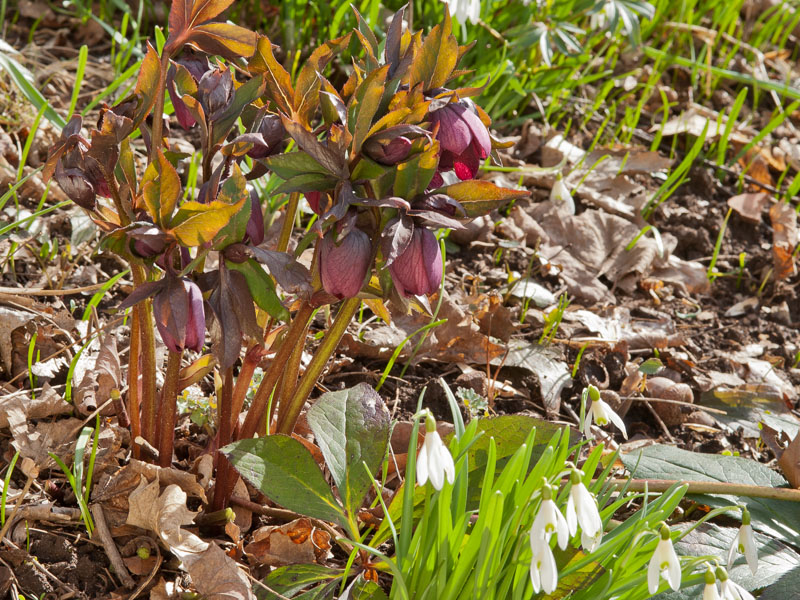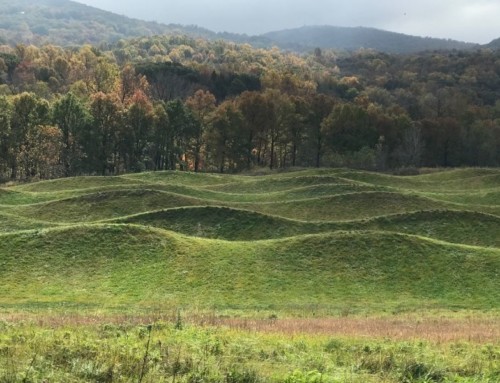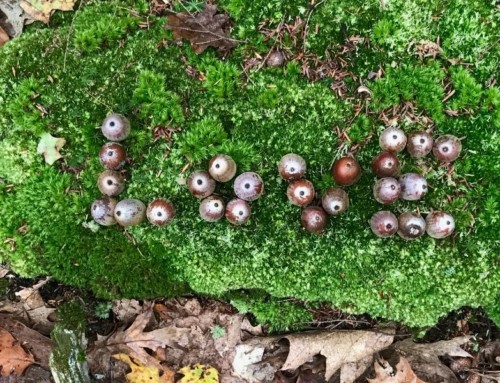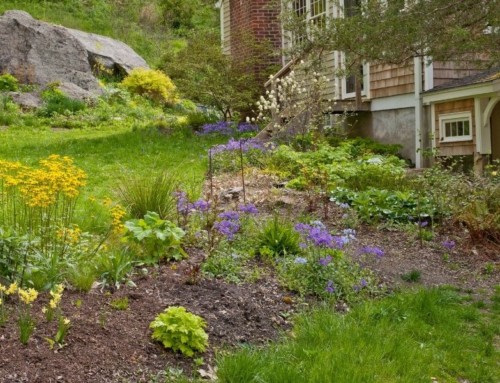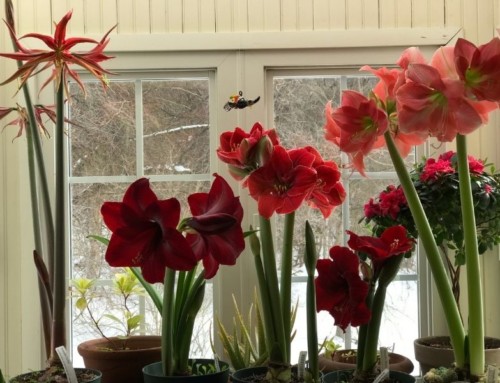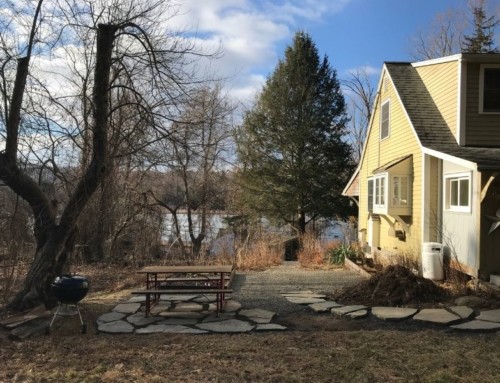Every window at the back of my house looks out on a hillside of hellebores – a mighty cheerful sight on a rainy or snowy late winter/early spring day.
After such a mild winter, my ‘Brandywine’ strain hellebores (Helleborus x hybridus ‘Brandywine’ ™) are especially lovely. Time to give these Lenten roses, aka Oriental hellebores, center stage.
I love their flowers-first habit. Buds show color before they even fully emerge from the cold earth. Nestled into dried fallen oak leaves, they look like a clutch of baby birds too young to leave the nest.
And I love the way Lenten rose clumps get bigger every year without any effort on my part. And they charmingly seed themselves in unexpected places and color combinations.
Sturdy individual flowering stems, with clusters of rose-like blooms on top, emerge from the crown first. Deeply dissected mostly evergreen leaves – one per stem – rise from the crown later.
The “mostly evergreen” foliage looks great most of the year – until January or February – winter takes its toll.
In March I carefully cut off last year’s sprawling browned out leaves to let the flowers strut their stuff. Old leaves insulate tender buds and act as mulch, so I hold off as long as possible and only remove the most unsightly.
Stinking Hellebores
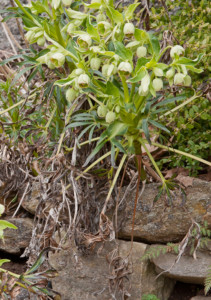
Helleborus foetidus
Even my cut-leafed stinking hellebores (Helleborus foetidus) look pretty good this spring. Most years their leaves suffer wicked winter burn and look terrible just as flowers are at their best.
Leaves and flowers grow on the same stems, which are perennial, rather than emerging separately each season. If I cut back winter-blackened leaves, the gawky naked stems just look stupid.
But their chartreuse bracts and clusters of red-rimmed bell-shaped flowers are a pleasure all winter. I welcome these short-lived, self-sowing perennials when they pop up – at a distance, where crummy leaves blend into the background.
They even make the rampant property-line forsythia I’ve battled for 30 years seem less like a screaming intruder, more like part of the garden.
Spring Color Combos
Repeat and blend enough similar colors and it starts looking like a cohesive plan – planned or not.
From a distance, chartreuse, white and ivory hellebores really stand out. They echo and blend with nearby drifts of white to bright daffodils, a subtle yellow Cornelian cherry tree (Cornus mas) and strappy ‘Golden Sword’ yuccas.
Hellebores with sexy dark maroon flowers look great wherever they’re planted, but are better appreciated up close. They’re lovely blended with varied pink tones (an effect created without my input, as they self-sow unpredictably).
I tend to go for contrast, so the pure white bloom that serendipitously appeared in a clump of darker-than-dark hellebores stopped me in my tracks. Might have to repeat that combo on purpose.
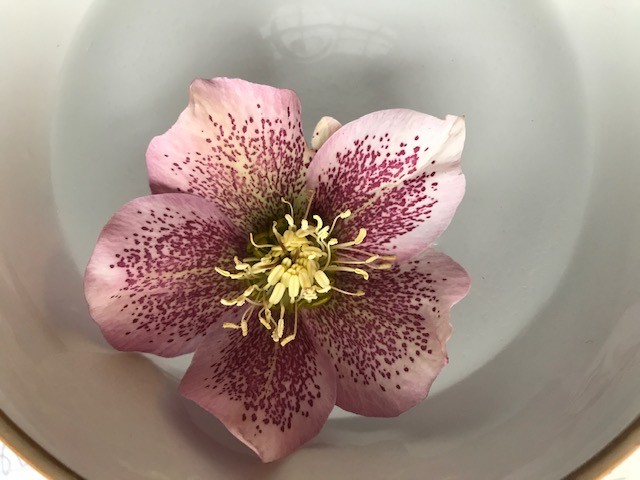
Enjoy hellebores indoors by floating in bowl of water
